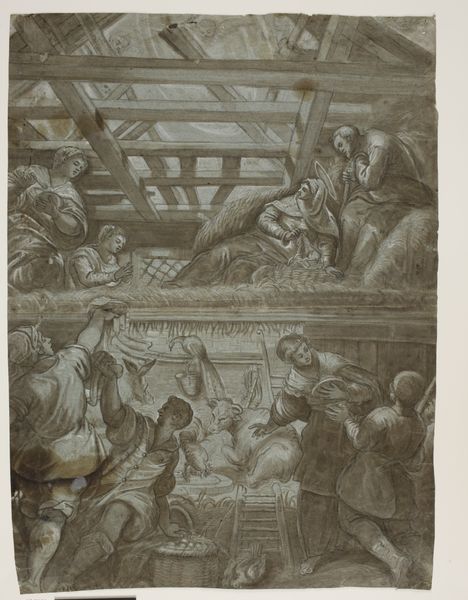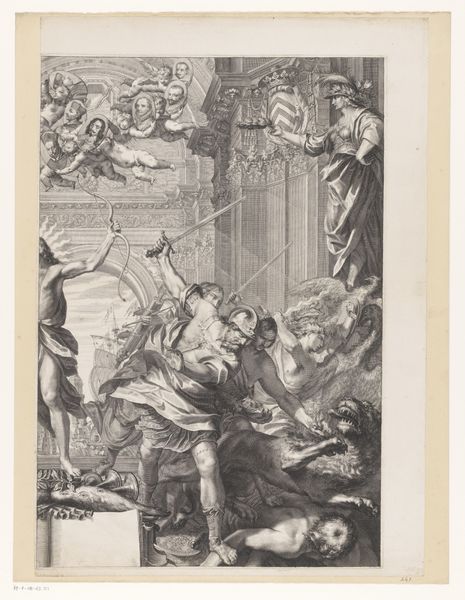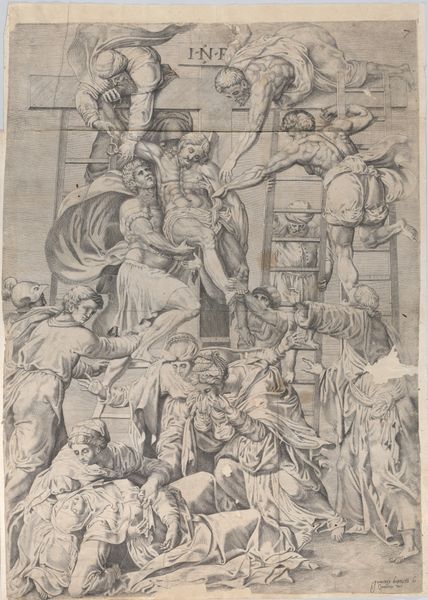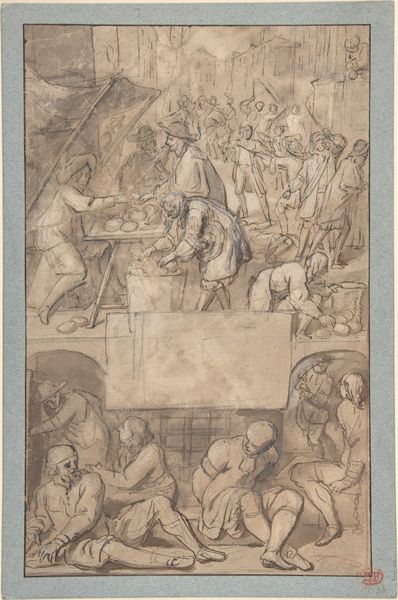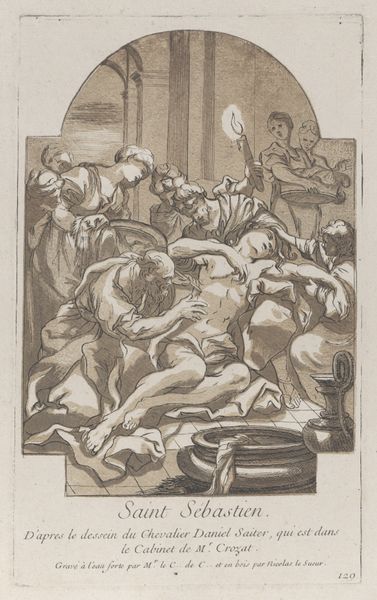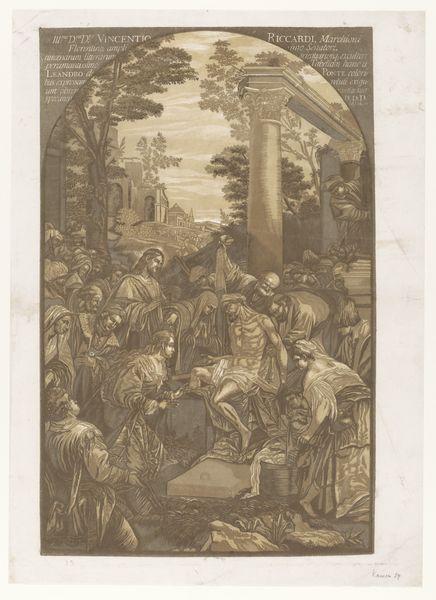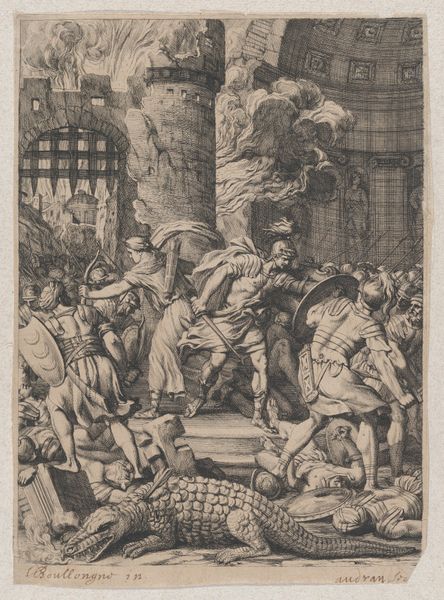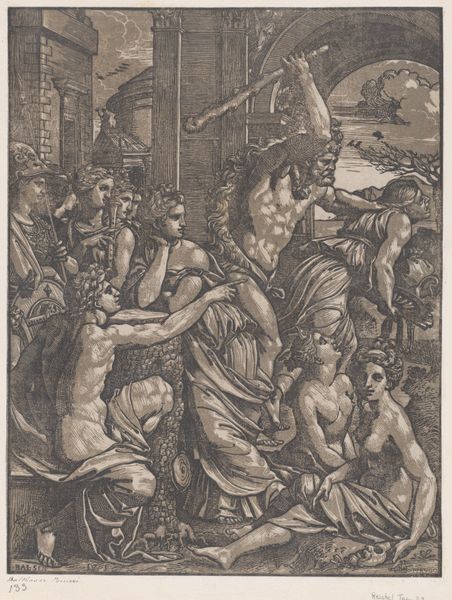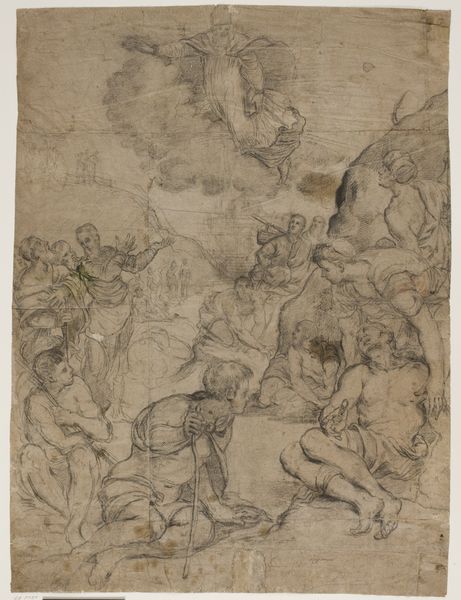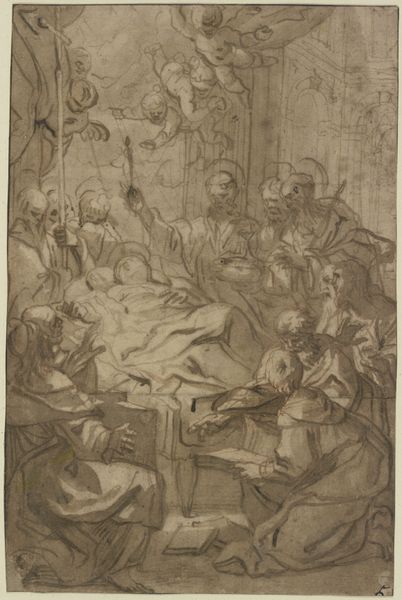
print, engraving
#
baroque
# print
#
old engraving style
#
figuration
#
line
#
history-painting
#
engraving
Dimensions: height 522 mm, width 392 mm
Copyright: Rijks Museum: Open Domain
Curator: Here we have “Adoration of the Shepherds,” an engraving dating roughly between 1626 and 1706 by Carlo Sacchi. What strikes you immediately? Editor: It’s intense. The contrast is so sharp, creating almost a chaotic scene despite the supposed serenity of the subject matter. The figures are so active. Curator: Indeed, Sacchi captures the drama of the moment, consistent with Baroque aesthetics. Notice the stark lines, typical of engraving, that add to the dynamic feel. Also the figures are coming from the bottom and converge on Mary with the infant Jesus, drawing the viewer in. It places emphasis on Christ's arrival for the common people, an idea often represented during the Baroque. Editor: And there's so much focus on the shepherds themselves—their weathered faces, their gestures. Their clothing are rumpled. There are many black men included. Often they were not included and often there was no common ground with everyday persons like them. You wonder about the power dynamics at play. Who commissioned this, and for what audience? Curator: It's vital to consider the socio-political context, and of Sacchi. During the 17th century, the Catholic Church wielded significant power, commissioning art to reinforce its doctrines and inspire piety among the masses. How would the rising middle class view the working shepherds? Editor: It raises a point about the glorification, even the romanticization, of poverty and servitude in religious art. Does this depiction challenge or reinforce existing social hierarchies? Is this about reverence or control? The historical interpretation has power implications. Curator: The intention wasn't necessarily to deceive. Art serves multiple purposes. This particular piece uses dynamism and detailed engraving, consistent with the stylistic trends and spiritual needs of the era. And now I'm struck at the expressions on the faces looking from behind. It's subtle, like a peek. Is this a reflection of class barriers? Editor: Food for thought, truly. Looking again, the figures and even their setting does feel crowded, stifling even, perhaps inadvertently highlighting the constraints of the existing order despite the celebratory subject. Curator: Art is never created in a vacuum; it interacts with prevailing power structures. Thanks for prompting these further layers of interpretation! Editor: Likewise, a stimulating look at "Adoration of the Shepherds." This pushes to examine beyond initial impressions and to seek critical analysis of what visual culture says about those in it.
Comments
No comments
Be the first to comment and join the conversation on the ultimate creative platform.
